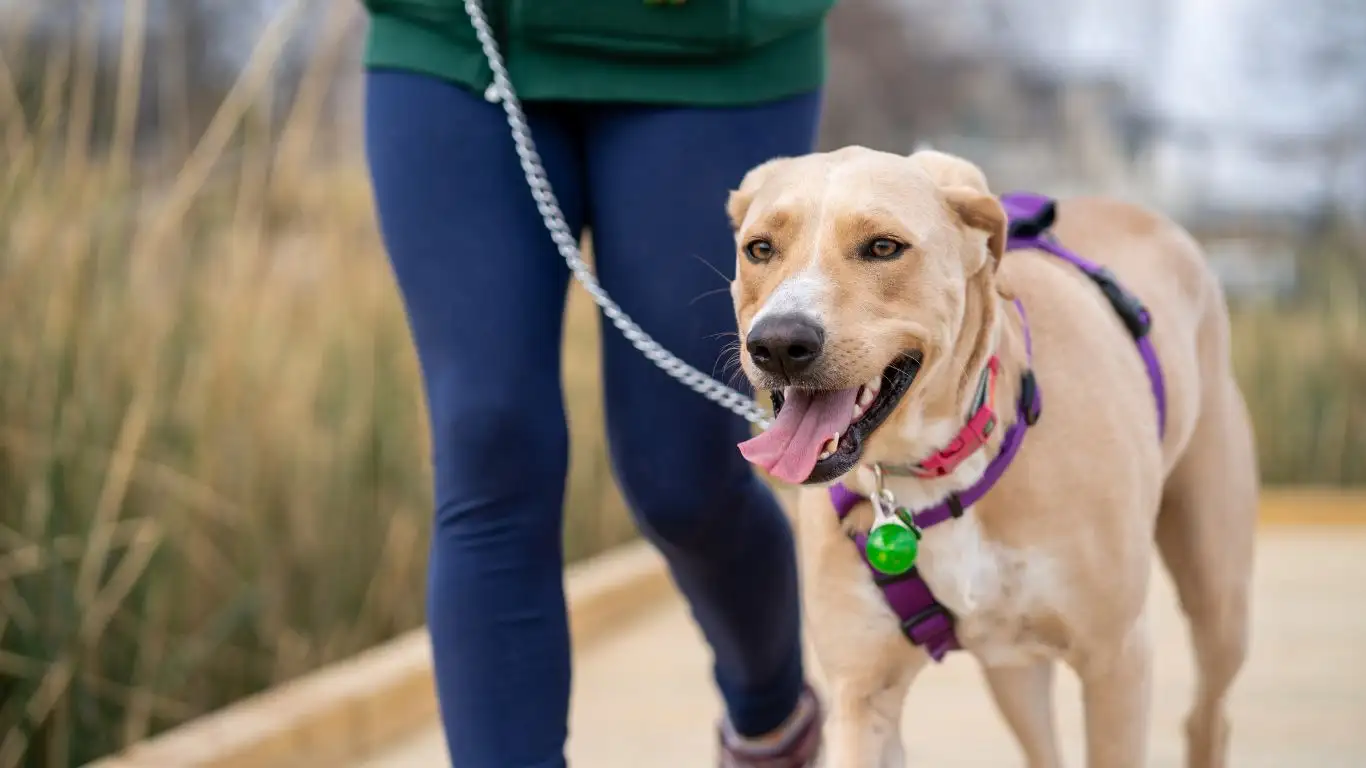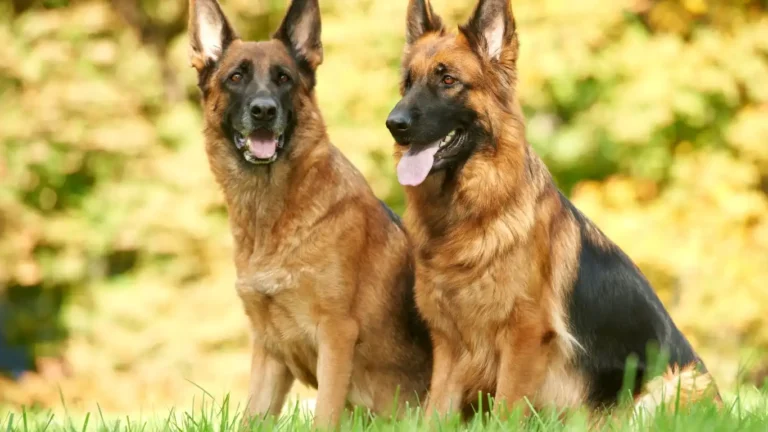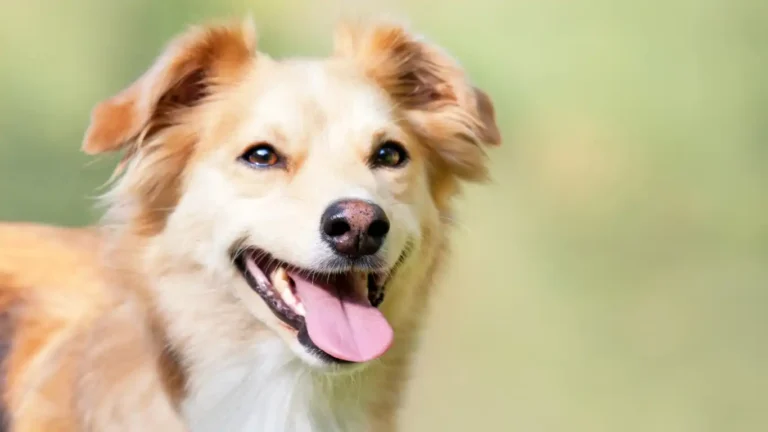Master Advanced Dog Training for a Happier, Smarter Pup
As a dog owner and trainer, I’ve always believed that the relationship between a dog and its owner goes beyond just basic obedience. When it comes to advanced dog training, it’s all about deepening that bond and creating a well-behaved, happy, and confident companion. In my experience, advanced dog training isn’t just for dogs with behavioral issues—it’s for any dog that you want to build a stronger connection with and help reach their full potential. Whether you’re looking to refine your dog’s skills or take on new challenges, advanced dog training can be a transformative experience for both you and your furry friend.
What Exactly Is Advanced Dog Training?
Advanced dog training is the next level of obedience training. It’s a step beyond teaching basic commands like “sit,” “stay,” and “come.” Think of it as fine-tuning your dog’s skills and teaching them more complex behaviors, often with an emphasis on reliability in different environments. While basic training is essential, advanced training focuses on enhancing your dog’s response in more challenging situations and introducing them to new tricks and tasks that require a higher level of concentration and understanding.
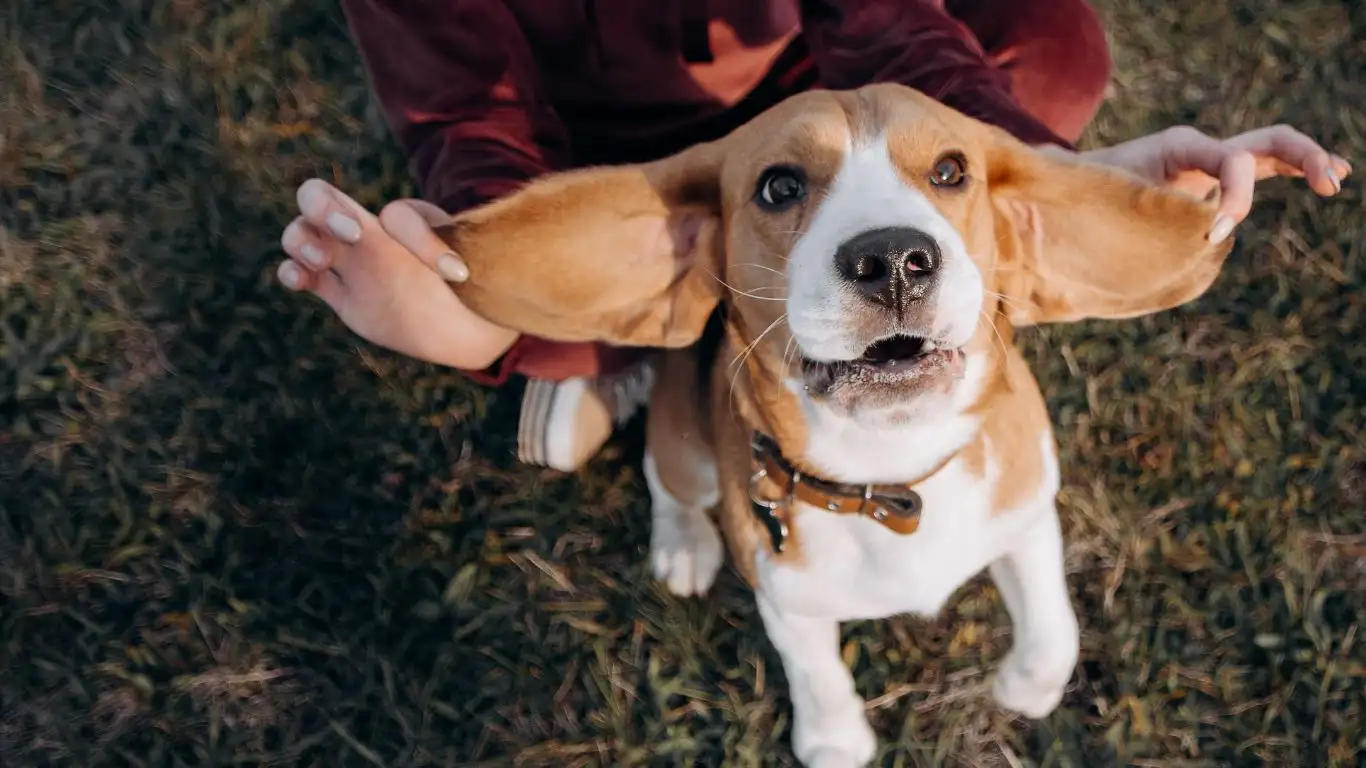
The Benefits of Advanced Dog Training
When I started working with advanced dog training techniques, I noticed that my dog was not only more obedient but also more confident. It wasn’t just about following commands—it was about knowing how to navigate the world with clarity and purpose. Here are some of the benefits of advanced dog training:
- Increased mental stimulation: Advanced training challenges your dog’s mind, keeping them engaged and preventing boredom, which can often lead to behavioral problems.
- Better behavior: As your dog masters more complex commands, they become more reliable in various situations, whether it’s around other people, dogs, or in distracting environments.
- Strengthened bond: The more time you spend training, the stronger your bond with your dog becomes. You’re not just teaching them skills; you’re also communicating and building trust.
- Improved socialization: Advanced training often includes exposing your dog to new environments, people, and animals, which helps them become more comfortable and well-adjusted in different situations.
What Are Some Common Advanced Dog Training Techniques?
There’s a wide range of advanced dog training techniques that you can explore. Depending on what you and your dog want to achieve, you can dive into everything from agility training to scent work. Here are a few of the most popular advanced dog training methods:
Agility Training
Agility training involves guiding your dog through a series of obstacles like jumps, tunnels, and weave poles. It’s an excellent way to build a dog’s confidence and enhance their physical coordination. Plus, it’s a fun way for both of you to exercise and bond. It’s not just about speed—it’s about control and focus. In my personal experience, dogs that go through agility training often become more responsive to commands, even outside of training sessions, because they learn how to stay focused amidst distractions.

Scent Work
If you’ve ever watched a dog search for something, you’ve seen the power of their nose. Scent work training taps into that natural ability and allows your dog to search for specific scents, often in complex environments. This type of training can be incredibly rewarding and mentally stimulating. It’s also great for building your dog’s problem-solving skills. Whether you’re training your dog to search for a specific item or even training them for professional roles like search and rescue, scent work opens up a whole new world of possibilities for both you and your dog.
Off-Leash Training
One of the most challenging aspects of advanced dog training is teaching your dog to respond reliably off-leash. This means they’ll obey commands like “come” or “stay” even when there’s no leash to guide them. It’s a huge milestone for any dog and requires a great deal of trust between the dog and their handler. In my experience, off-leash training is one of the most satisfying achievements you can reach with your dog. The freedom it offers is incredible, but it also demonstrates how much trust and communication you’ve built together.
When to Start Advanced Dog Training
While you can start advanced training once your dog has mastered the basics, there’s no “perfect” age to begin. Many owners start advanced training when their dog is still a puppy, while others begin in adulthood. However, there are a few important factors to keep in mind:
- Age and maturity: Younger dogs, especially puppies, might have shorter attention spans and might not be ready for more challenging tasks. However, older dogs with the right temperament can still thrive in advanced training.
- Health and physical condition: Some advanced training exercises, such as agility, can be physically demanding. Make sure your dog is healthy and capable of handling the physical aspects of the training.
- Foundation in basic obedience: Before diving into advanced training, your dog should have a solid understanding of basic commands like sit, stay, and come. It’s easier to build on these basics than to start from scratch with more complex behaviors.

How to Choose the Right Advanced Training for Your Dog
Choosing the right advanced training for your dog depends on your goals and your dog’s personality. Not every dog will excel at every type of advanced training, so it’s important to tailor your approach to your dog’s unique needs. Here are a few things to consider when choosing an advanced training program:
- Assess your dog’s energy level: Active dogs may excel in agility or scent work, while more laid-back dogs might enjoy tasks like trick training or off-leash work.
- Consider your goals: Are you looking for more mental stimulation? Is behavior modification a priority? Understanding what you want to achieve will help guide you toward the right training techniques.
- Find a reputable trainer: Look for trainers who are experienced in advanced dog training techniques. A good trainer should be able to assess your dog’s needs and create a personalized training plan that suits both of you.
Advanced dog training is all about pushing the boundaries of what you and your dog can achieve together. It’s an exciting journey that will not only improve your dog’s behavior but also enhance the bond you share. Stay tuned for more tips and techniques on how to make the most of your advanced dog training experience!
Positive Reinforcement in Advanced Dog Training
One of the most important aspects of advanced dog training is the use of positive reinforcement. Over the years, I’ve learned that rewarding good behavior—whether it’s with treats, praise, or toys—is the key to maintaining your dog’s motivation and enthusiasm for training. Positive reinforcement doesn’t just help your dog learn commands faster; it strengthens the bond you share by associating training with positive experiences. Think of it as a way to make learning fun and rewarding for your dog.
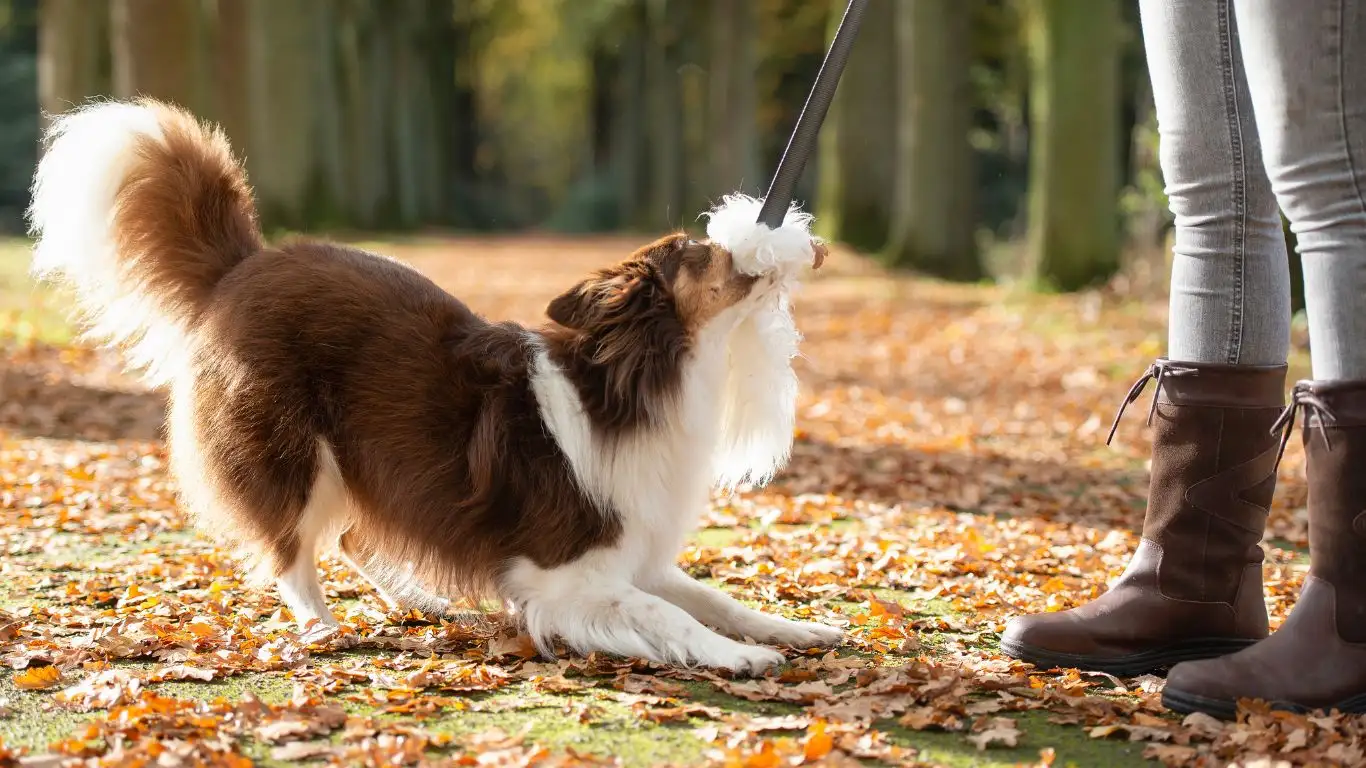
Why Positive Reinforcement Works So Well
Positive reinforcement is rooted in the idea that dogs will repeat behaviors that are rewarded. In my experience, this is much more effective than punishment-based training methods. Dogs, just like people, respond better when they’re encouraged and rewarded for doing something right. Here’s why positive reinforcement works:
- It builds confidence: When dogs get rewarded for their actions, they gain confidence in themselves. This is particularly important in advanced training because many of the tasks require a high level of focus and trust.
- It strengthens the bond: Every time you reward your dog, you’re creating a positive connection. Over time, this enhances the relationship between you and your dog, making training sessions something they look forward to.
- It encourages engagement: Dogs that are rewarded consistently stay more engaged in the training process. They learn to associate the training session with something positive, which makes them more eager to participate.
Understanding the Role of Consistency in Training
Another key principle that has been invaluable in my own training experience is consistency. It’s easy to forget that training doesn’t just happen in the moment—it requires a consistent effort over time. Whether you’re working on agility, scent work, or even just teaching a new trick, your dog needs to know that certain behaviors will always be rewarded in the same way. Without consistency, your dog can get confused, and that’s when training can hit a roadblock.
How Consistency Makes a Difference
Imagine this scenario: You’re training your dog to stay, but sometimes you reward them when they stay for 10 seconds, other times for 30 seconds, and other times you don’t reward them at all. Your dog will get mixed signals and start to wonder what’s expected. But, if you’re consistent in how you reward your dog—whether it’s based on duration, behavior, or environment—they’ll begin to understand exactly what you want and work harder to meet those expectations.
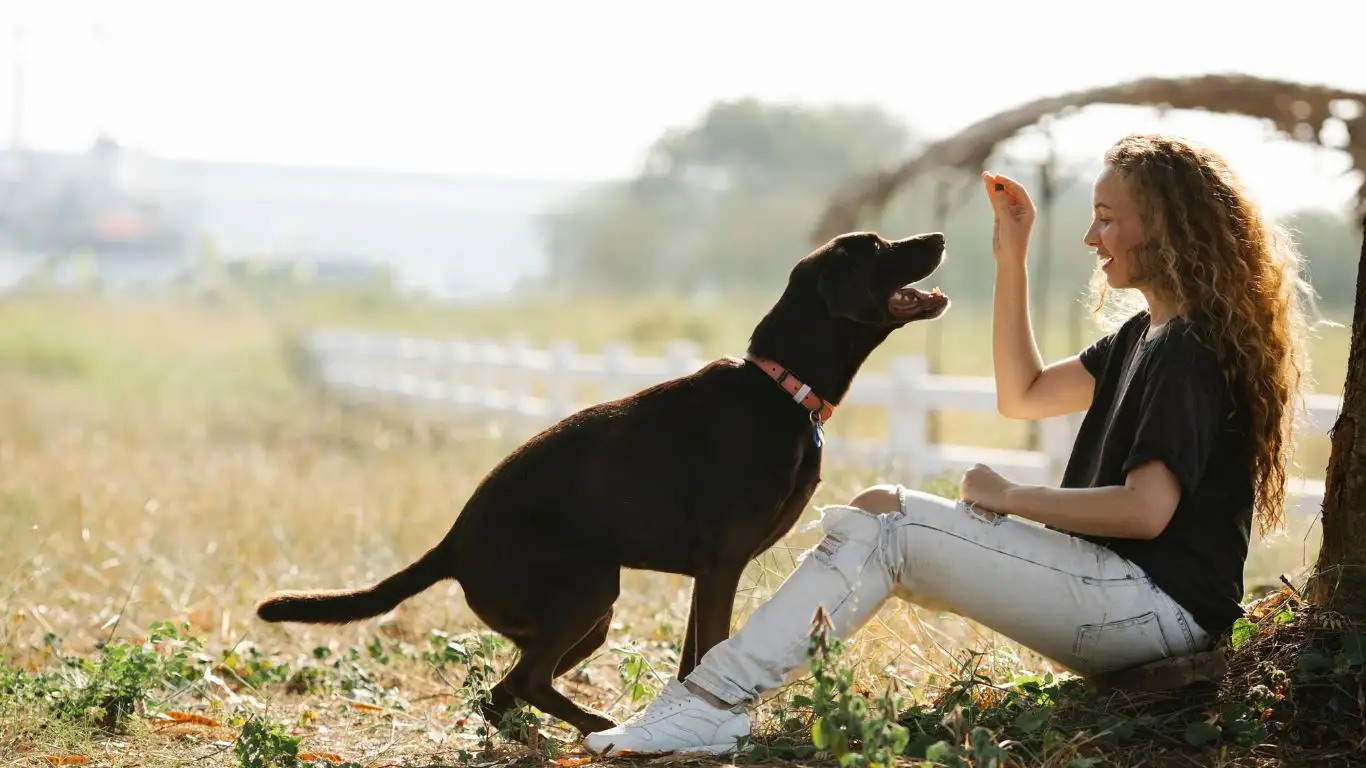
Tips for Staying Consistent
In my experience, staying consistent doesn’t just mean following the same rules every time—it also involves managing your own expectations. Here are a few tips that can help you stay consistent in your advanced dog training:
- Set clear expectations: Know exactly what you want to achieve in each session, whether it’s teaching a new trick or reinforcing a command.
- Use the same cues and rewards: Always use the same verbal cues and hand signals. This consistency helps your dog associate those cues with the desired behavior.
- Practice regularly: Regular practice, even for short periods, is much more effective than long, irregular sessions. Consistency in timing is just as important as consistency in approach.
Understanding Your Dog’s Individual Needs
Every dog is different. Some might thrive in high-energy activities like agility training, while others may prefer tasks that involve more focus and mental stimulation, such as scent work or trick training. In advanced dog training, it’s essential to tailor the training process to your dog’s personality, temperament, and energy level. If you’re unsure of where to start, pay attention to how your dog reacts to different types of activities. The key is to find a training method that aligns with their natural abilities and interests.
How to Recognize Your Dog’s Strengths
Take a moment to observe your dog during daily activities. Are they more driven by physical activity, or do they seem to enjoy solving puzzles and tasks? Some dogs are natural athletes, while others excel in problem-solving. In my experience, matching your dog’s natural tendencies with the right training approach can make all the difference. If your dog loves to run and jump, agility training might be the perfect fit. But if they’re more focused and enjoy sniffing around, scent work could be their sweet spot.
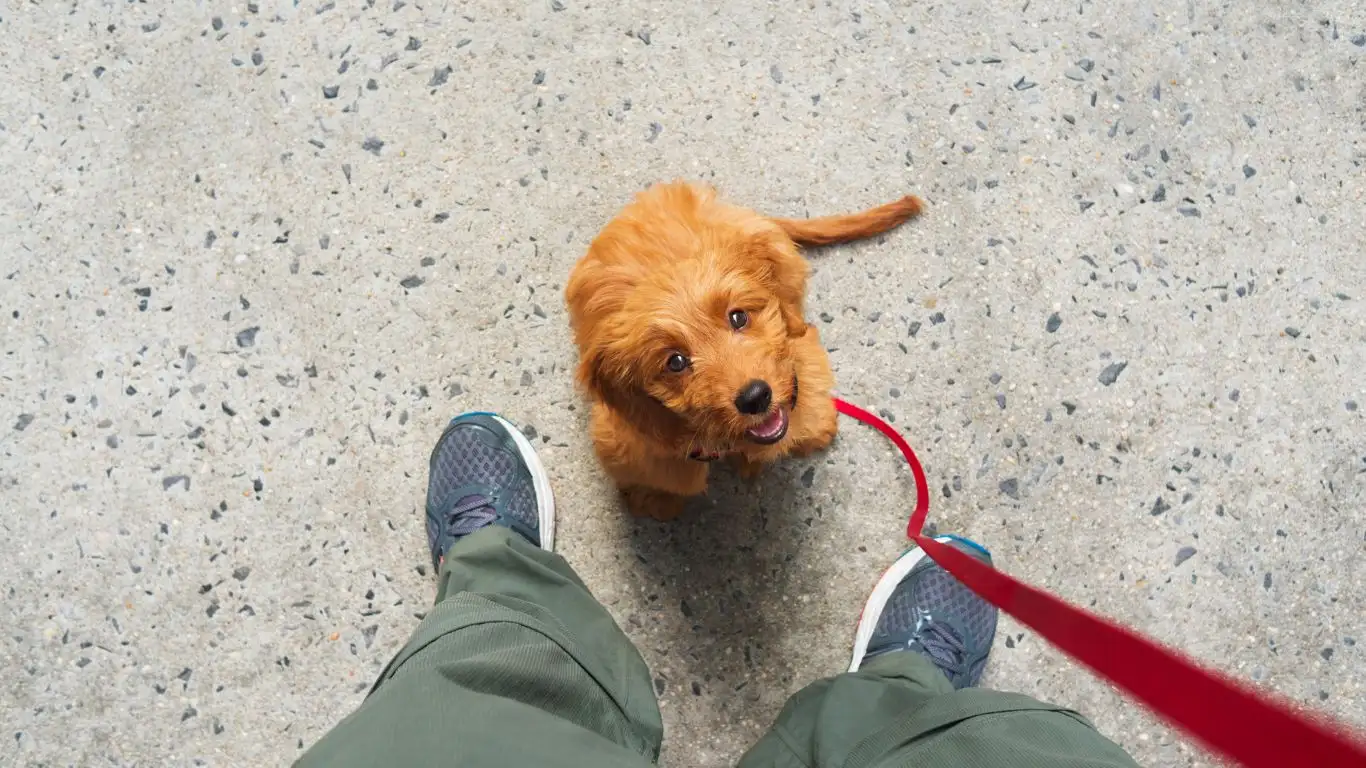
Adapting Training to Your Dog’s Personality
In addition to their natural tendencies, consider your dog’s personality. Some dogs may need more patience, while others might be more independent and self-driven. Tailoring your training approach to their personality helps foster a sense of security and makes the training process more enjoyable for both you and your dog. For example, a shy dog might need gentle encouragement and lots of positive reinforcement to gain confidence in new situations, while a more confident dog may require challenges to keep them engaged.
Common Challenges in Advanced Dog Training and How to Overcome Them
Even the most experienced trainers run into challenges along the way. Whether it’s a dog who struggles with distractions or one who seems to have reached a training plateau, every dog faces obstacles during their advanced training journey. The key to overcoming these challenges is patience, persistence, and adapting your approach. Here are some common obstacles I’ve encountered and how to tackle them:
Dealing with Distractions
One of the most common challenges in advanced training is getting your dog to stay focused amidst distractions. This could be anything from other dogs, people, or even environmental factors like noise. The best way to combat distractions is to gradually increase the level of difficulty. Start training in a quiet environment and slowly introduce more distractions as your dog masters the commands. Reward them for maintaining focus, even in more challenging situations.
Training Plateaus
Sometimes, dogs hit a plateau where it feels like they’re not progressing as quickly. This can be frustrating, but it’s completely normal. When this happens, try changing up your training routine or introducing new challenges. Sometimes, taking a break and returning to the basics can help refresh both you and your dog’s motivation. Keep things fun and varied to keep your dog engaged and eager to learn.
Building Long-Term Success with Advanced Dog Training
When it comes to advanced dog training, it’s not just about achieving results in the short term—it’s about building a foundation for long-term success. Over my years of experience, I’ve seen firsthand how the right techniques and mindset can create lasting changes in both the dog and the owner. Advanced dog training is a marathon, not a sprint. It’s about continuously building on what your dog already knows and incorporating new challenges and skills as they grow.
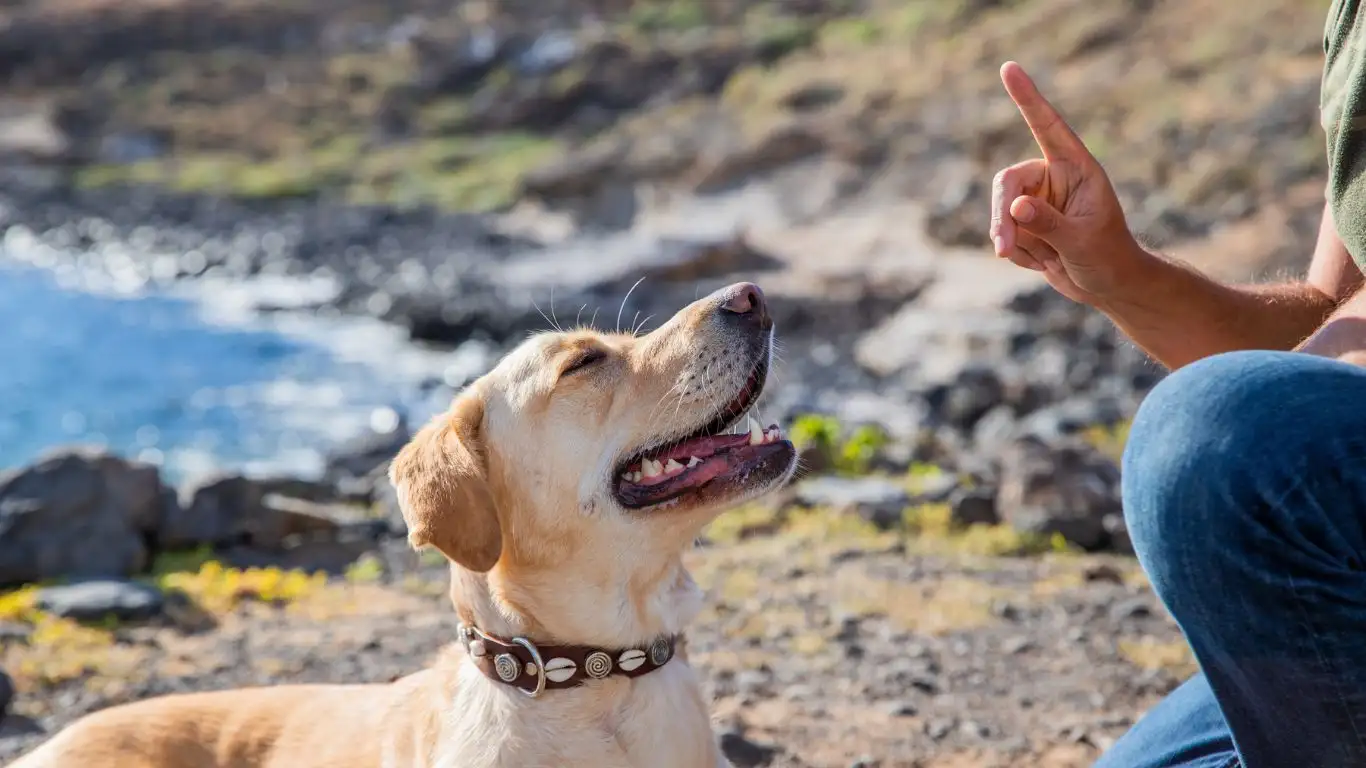
The Importance of Lifelong Learning
Advanced dog training doesn’t stop once you’ve achieved a goal. In fact, it’s a lifelong process. Dogs, like us, continue to learn and grow throughout their lives. What’s important is fostering an environment where they feel motivated and encouraged to keep learning. Even after your dog masters the basics, there’s always something new to explore—whether it’s advanced obedience, learning new tricks, or even mastering more complex skills like scent detection or protection work.
In my experience, lifelong learning not only keeps the training process fun and engaging, but it also helps prevent boredom. Bored dogs can become destructive, so keeping them mentally challenged and interested in training is key to a happy, well-behaved dog. A great way to continue challenging your dog is by regularly introducing new tasks or commands and keeping sessions short and fun to avoid burnout.
How to Continue Developing Skills
Once your dog has mastered basic commands like sit, stay, and come, it’s time to gradually move to more advanced tasks. The key is to keep things exciting and introduce skills that keep your dog engaged. One of my favorite ways to do this is by setting up new challenges in different environments—changing up the location can help your dog generalize their skills and be able to perform under various distractions.
- Varying the environment: Take your dog to new places to practice commands. Whether it’s a different room at home, a park, or even a busy street, different environments will help reinforce their training.
- Incorporating distractions: As your dog gets more comfortable with advanced commands, add distractions—like toys, other animals, or noises—to make the training more challenging.
- Regular check-ins: Even if your dog is highly trained, regular check-ins are crucial to make sure they’re retaining their skills. It’s like a refresher course to keep their skills sharp!
Training for Specific Purposes: Specialized Skills
As you dive deeper into advanced dog training, you may want to consider training your dog for specialized tasks. Whether it’s for service dog work, therapy, or just enhancing your dog’s natural abilities, specialized skills can open up a whole new world of possibilities. I’ve worked with many dogs who have excelled in areas like scent detection, agility, or even search and rescue work. It’s incredibly rewarding to see a dog achieve their full potential in these fields.
Agility Training
Agility training is a fantastic way to combine mental and physical stimulation for your dog. It involves navigating an obstacle course designed to test their speed, accuracy, and focus. When I’ve worked with dogs in agility training, I’ve always seen how it sharpens their focus and improves their confidence. Plus, it’s a ton of fun for both the dog and the handler! From jumping hurdles to weaving through poles, agility training helps develop coordination, quick thinking, and teamwork between you and your dog.
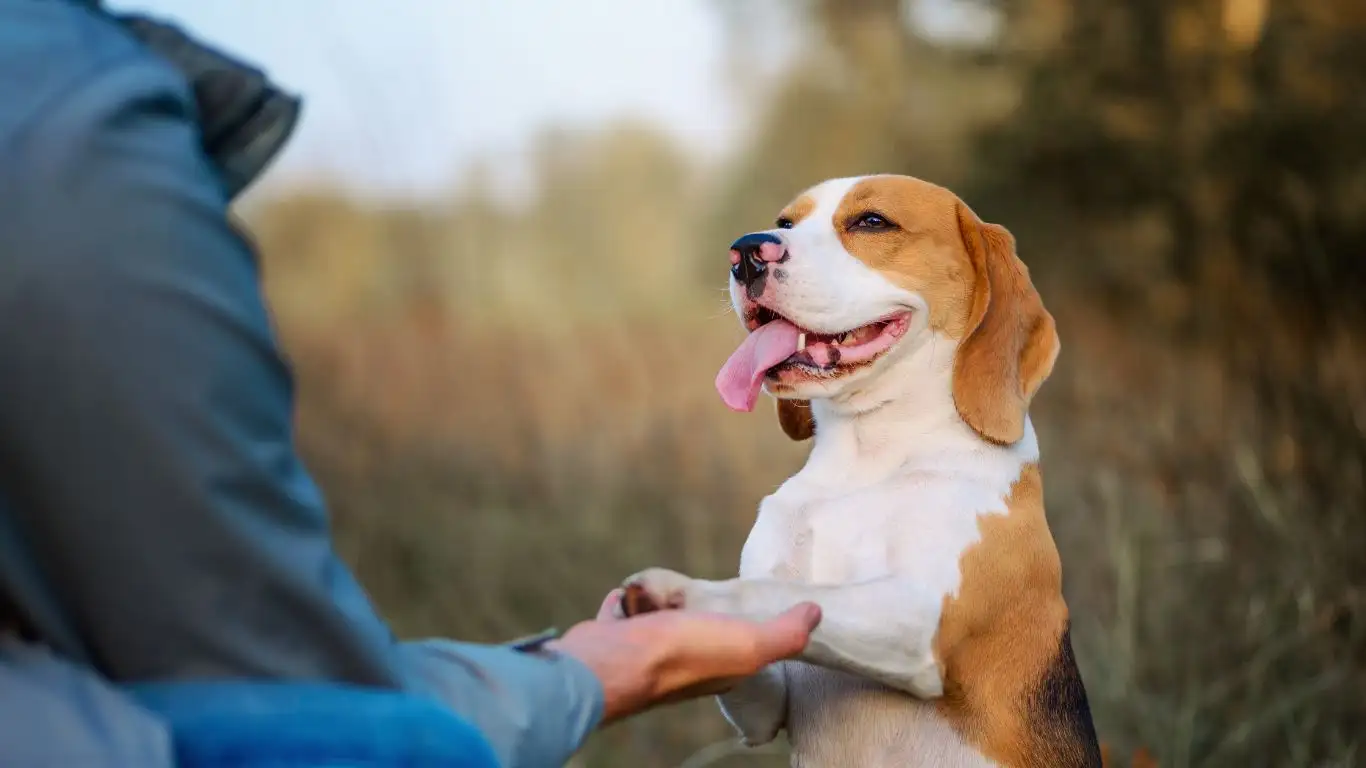
Scent Detection
For dogs that love to sniff, scent detection is a great specialized skill. It involves teaching your dog to use their nose to locate specific scents. This type of training is not only mentally stimulating but also taps into your dog’s natural abilities. Scent detection training can lead to incredibly rewarding work, such as search and rescue or assisting in detecting medical conditions like low blood sugar in service dogs.
It’s fascinating to watch dogs use their noses to locate hidden objects, and it’s an excellent way to engage their mind while improving their focus. Whether it’s tracking a scent trail or finding a hidden object, scent detection taps into your dog’s natural instincts and can be an excellent way to challenge them further in their training journey.
How to Keep Your Dog Motivated
Keeping your dog motivated throughout their training is key to long-term success. Motivation can change depending on the dog’s age, breed, and individual preferences, so it’s essential to find what drives your dog. I’ve found that mixing up rewards and keeping training sessions exciting and varied goes a long way in maintaining motivation. Here are some techniques that I use to keep my dogs motivated during advanced training:
- Change up rewards: Sometimes a treat isn’t enough—try mixing in toys, playtime, or even a quick game of fetch as rewards. This helps prevent your dog from getting bored with one type of reward.
- Short, frequent sessions: Instead of long, exhausting training sessions, try shorter, more frequent sessions. This keeps your dog energized and focused without wearing them out.
- End on a high note: Always aim to end your training session on a positive note. If your dog performs well, reward them and then finish the session. This creates a positive association with training and encourages them to perform well next time.
Additional Resources for Dog Training Enthusiasts
If you’re interested in continuing your dog’s training journey, there are numerous resources available to help guide you along the way. Websites like AKC and PetMD offer a wealth of information on advanced training techniques, and I highly recommend checking out their articles and tips. Whether you’re looking for specific training advice or general tips on keeping your dog engaged, these resources are a great place to start.
Additionally, joining a local training group or taking classes with a professional dog trainer can be a great way to meet other dog owners and learn new techniques. In my experience, having a mentor or trainer who can offer guidance and feedback can make all the difference in your training success.
Disclaimer
The content provided in this article is for informational purposes only and is based on my personal experience as a dog trainer. Results may vary depending on the individual dog, training methods, and other factors. Always consult a professional trainer if you’re unsure about a particular training method or if you encounter behavior problems that require more specialized attention. Remember, every dog is unique, and the key to success is patience, consistency, and understanding your dog’s individual needs.
